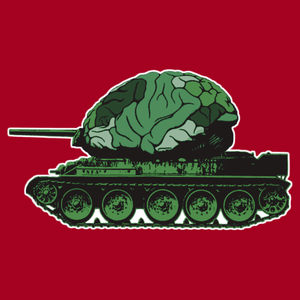 Making one’s business successful takes an immense amount of planning, testing, and measuring in order to launch a brand that can keep a competitive edge in the marketplace. But all entrepreneurs share one thing in common: they are all working to compete in a downed economy. We all know that competition makes one better. But sometimes coming together to form an entrepreneurial think tank has many benefits to help with revenue, product development, and in gaining a greater market reach.
Making one’s business successful takes an immense amount of planning, testing, and measuring in order to launch a brand that can keep a competitive edge in the marketplace. But all entrepreneurs share one thing in common: they are all working to compete in a downed economy. We all know that competition makes one better. But sometimes coming together to form an entrepreneurial think tank has many benefits to help with revenue, product development, and in gaining a greater market reach.
Larger players do it
There are many cases worth noting when examining rival companies working together for the better good. For example, the two biggest postal companies in America joined forces with the goal to cut carbon and fuel costs. The world’s biggest post company, the US Postal Service (USPS) and the world’s largest delivery company UPS are working together as a singular business think tank to form a sustainability initiative called “Blue and Brown Make Green”. In this collaboration officials from each business will come together to solve the commonly shared problems that face their industry.
The bright business minds from these two companies will provide a template for how any competitive brand can collaborate and find efficiencies in the supply chain. UPS chief executive Scott Davis says that the collaboration will also aim to reduce the carbon footprint of the respective supply chains and contribute a wave of sustainability to the world. Entrepreneurs can learn from collaboration events such as this one. But they are already leaving an impressive mark.
Traveling minds
Entrepreneurial think tanks are forming and following the lead of larger companies who strive to make a difference. The unreasonable institute provided a floating think tank comprised of entrepreneurs from all over the country who sailed the world together to improve their products and make the world a better place. For example, a company called One Earth Designs that makes parabolic solar cookers discovered through teamwork that its solar shell monopolized the vast majority of its product cost. The item’s success depended on getting the cost down. Therefore, a prototype workshop took place on the ship in which Cathy Rogers, the VP of global business development for IBM and mentor on the ship oversaw people scrambling with materials to help in re-design efforts.
All it takes is reading new technology news to learn how technology and entrepreneurial think tanks are improving products and life in general. At the end of the day, technology gives problem solvers in the business world the ability to find solutions to problems in the world. For example, Bangalore-based Vita Beans Neural Solutions developed a mobile app called Guru-G—a “gamified” learning platform for teacher training and certification that is being widely used in India. Programs such as this one make for exceptional learning foundations, and provide easy communication. Just imagine how remote areas can benefit from technologies like this, and how product developers can make their creations more scalable for a greater, global market through a brainstorming session with their peers.
Image source: http://bizgovsociii.files.wordpress.com/2012/03/tt1.jpg
